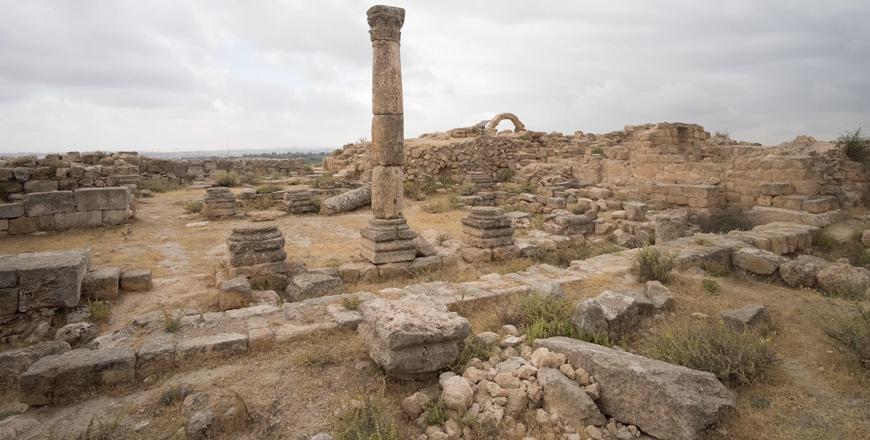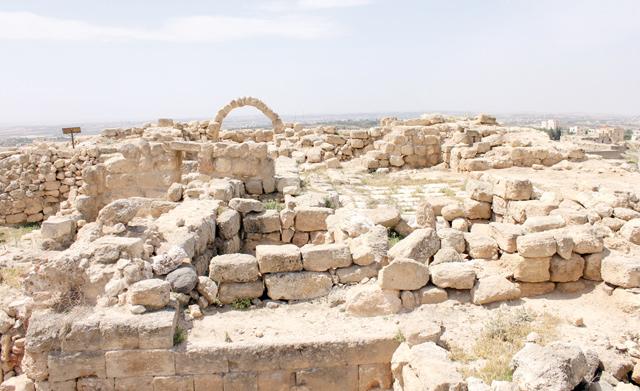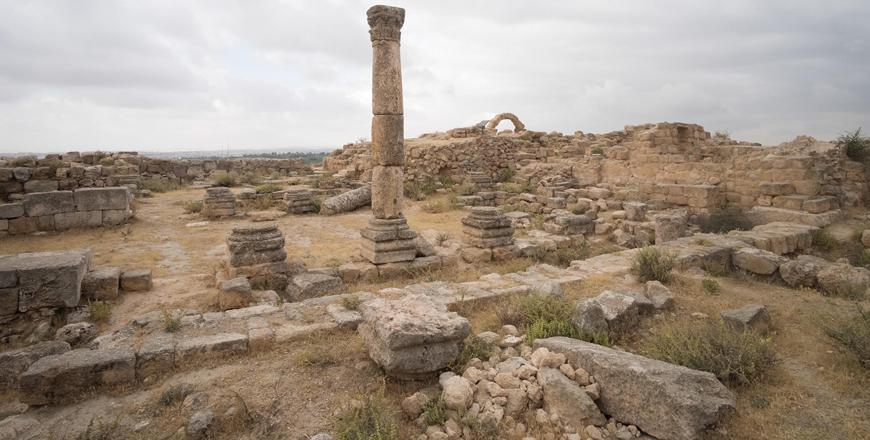You are here
Century-old cooking pot tells of mediaeval ‘kitchen culture’ in Levant
By Saeb Rawashdeh - Dec 11,2021 - Last updated at Dec 11,2021

A view of Tell Hisban, near Madaba, the excavation site of the cooking pot (Photo courtesy of Ivan LaBianca)
AMMAN — A cooking pot excavated in 2018 at Tell Hisban, near Madaba, was one of the main topics of a webinar held on Thursday, titled “Kitchen culture in 13th-century Syria: Archaeological and botanical perspectives on dietary choices, garbage disposal, and health”.
The webinar, organised by Bonn University, gathered archaeologists and historians specialised in the Mamluk period (1250-1517).
“We also have installations, clay ovens in forms of tabuns [dome-shaped ovens] and tanurs [cone-shaped ovens], one is fired from outside and the other is generally fired from inside, and they are used for cooking of different kinds of dishes,” said Professor Bethany Walker.
It is rare to recover mediaeval cooking pots from the same site, Walker noted, adding that Tell Hisban is one of the many administrative centres in the southern Levant and was largely populated in 13th century.
Many of the desert castles, farmsteads, villages and forts were abandoned for centuries and then re-occupied in 13th century, Walker stressed, noting that most of these sites were located on roads and had advanced water infrastructure.
“They were perfect places to settle large groups of people for short period of time,” she said.
The team also studied historical sources, trying to determine what is missing from archaeological evidence, said Alan Farahani from The University of California in Los Angeles.
“We utilised environmental archaeology as a paradigm in order to reconstruct the diet and lifestyles of people from Ayyubid –Mamluk period,” Farahani underlined.
Environmental archaeology tries to connect various factors like soil, water, plants, animals and the atmosphere, and in the concrete case of Tell Hisban reconstructs what was the diet of inhabitants of the site during the Ayyubid-Mamluk period, Farahani said.
“Environmental archaeology is oriented towards understanding of all these various relationships throughout human existence,” noted Farahani.
The physical conditions of cooking pots tell us about the process in which the food was prepared, not about the food itself, Walker said.
“For instance, the pot we found was used for the slow cooking of a porridge,” she said, adding that the burn and scratch patterns indicate how the pot was used.
“As far as Mamluk studies are concerned, foodways are a fast growing area of interest” and it will become an even more dynamic field in the future, Walker noted.
Related Articles
AMMAN — There has been a boom in studies devoted to the Mamluk period (1250-1517) due to a recent “rural turn” in Islamic archaeology, accor
AMMAN — Tell Hisban, located in the Madaba Plains, represents the “granary of the empires”, noted an American archaeologist.The site, coveri
AMMAN — To reconstruct Jordan’s past, animal remains play a very significant role, according to an Italian zoo-archaeologist.“Animals, and i

















